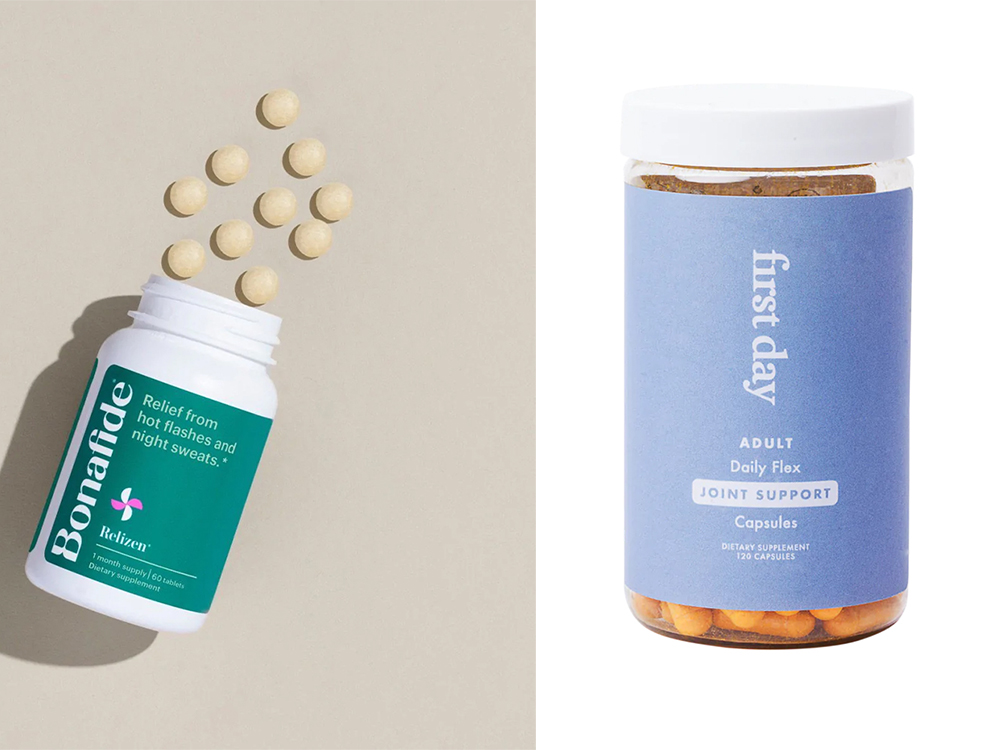Beth Fairchild is a mother of two, tattoo artist and yoga teacher. She’s also living with metastatic breast cancer.
Her story isn’t necessarily so standard: Breast cancer runs in her family so she was always “incredibly conscious” of practicing a healthy lifestyle and being extra diligent about detection. Then, at age 34, she received the diagnosis of Stage 4 cancer.
“Ninety percent of people who have breast cancer have an earlier stage cancer,” she says. “I never experienced a lump in my breast—I even had a negative mammogram, so I had a very rare presentation of the cancer. It was shocking news to receive.”
Shock slowly turned to action, although Fairchild admits it was rather difficult to figure out all of her options right away. “We lost some time; at first, getting a mastectomy wasn’t on the table. Then, I decided I wanted the mastectomy. It was really a quality-of-life thing. I wanted them off. I wanted to know that tissue was gone.”
You May Also Like: What a Dermatologist Wishes She Knew About Her Skin Before She Was Diagnosed With Cancer
MAKING MOVES
This past May marked five years since Fairchild’s diagnosis. During her journey, she’s been most proud about being “transparent with her story,” and is especially passionate about promoting her skill of nipple tattooing post-reconstruction and her work as president of METAvivor, an organization dedicated to helping women and men living with Stage 4 metastatic breast cancer. More recently, she also made the decision to get a breast reconstruction herself.
“In the beginning I was terrified of imminent death, but now I’m living in the moment. I’m really savoring and enjoying what I have right now—and that was a big part behind why I decided to get a reconstruction,” she says. “I lived ‘flat’ for three years and was five years out from my diagnosis. But then I started thinking, what if I live for 10 more years and regret not getting the reconstruction? I don’t want to do that. I have to live in the now.”
OPTIONS ABOUND
While Fairchild’s story definitely doesn’t follow a set path, New York plastic surgeon Alexes Hazen, MD says the decision to get a breast reconstruction post-cancer is something many women don’t even know is an option.
“Oddly, the majority of the women in this country who have breast cancer do not undergo reconstruction and do not realize it is available and covered by insurance. I wish every woman would know that! Secondarily, there are many, many options, and the options can be customized to your lifestyle and needs—both implant and tissue options have become more and more sophisticated over the years,” she says. “Also, the adjunct of fat transfer has really been a game changer in terms of the quality of results.”
IMPROVED EXPERIENCE
Dallas plastic surgeon Rod Rohrich, MD is also excited by the new developments in reconstruction, although he admits most women don’t realize the surgery is not a “one-stage” procedure. “In most cases, either staged reconstruction with or without implants or expanders is needed, and the nipple reconstruction is often done as the final procedure, but most of the secondary reconstructive procedures are not as major as the initial one,” he says. San Jose, CA plastic surgeon Kirk A. Churukian agrees: “While the overall cosmetic outcome for reconstruction is improving, many women may not realize the multiple steps involved to contour and refine the breast shape. It is a team effort that involves not only the doctor and patient, but also staff members and the patient’s family. A clear time line relating to a long-term plan helps to set expectations and improve the experience.”
END NOTES
While Dr. Hazen admits we’re at a time of “heightened awareness” regarding implants, she doesn’t think it’s a bad thing. “This kind of examination of a product and data is so important. Patient safety is the most significant aspect of surgery.”
RECONSTRUCTION 101
Breast reconstruction is not a one-size-fits-all surgery. “Not everyone needs an implant under their pectoralis muscle,” Eugene, OR plastic surgeon Mark Jewell, MD says. “Latissimus, TRAM flap and materials like mesh to support weakened tissues are some of the other options.”
Consult: One key step of the consult will be determining if the timing of your reconstruction is approved, and discussing the desired outcome.
What else to know: Post-mastectomy, Dr. Rohrich says that, typically, a tissue expander is inserted beneath the skin and chest wall muscle; injections of saline are then used to stretch the skin to prep it for the implant. Nipple reconstruction and removal of the expander and replacement with an implant can then be performed later. “But skin-sparing mastectomies [preservation of nipple and areola], in the right candidate, are becoming more common,” Dr. Churukian says.
MAMMO VAN: At Stony Brook Cancer Center in New York, scheduling a mammogram has never been easier. Known as the “On-the-Van Mammogram,” the mobile service comes to you—just find out when the van will be in your neighborhood, schedule an appointment online and you’re set. The all-female medical team will make you feel comfortable, and the spacious van features a registration area, waiting room, private changing and exam spaces, and state-of-the-art 3-D equipment.
IMAGING INTEL: With several locations in California, Scottsdale, AZ and Grand Rapids, MI, QTbreasthealth is offering an “evolution in breast imaging.” The centers offer the FDA-cleared QTscan, which provides breast imaging clarity, minus radiation and compression, and is specifically designed to improve imaging for dense breasts and in cases where mammograms are challenged such as breast implants and women in need of safe repeat imaging.
TESTING TAKEOVER: A new study published in Plastic and Reconstructive Surgery recommends that genetic testing should be considered for all women undergoing a unilateral (single) mastectomy or abdominal-based free-flap breast reconstruction.

















